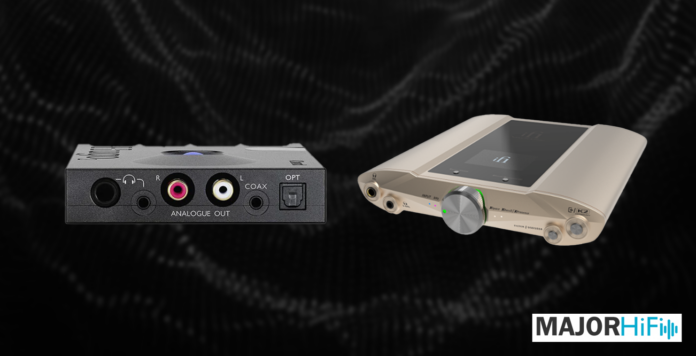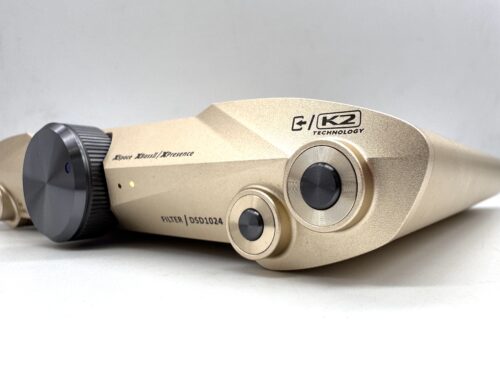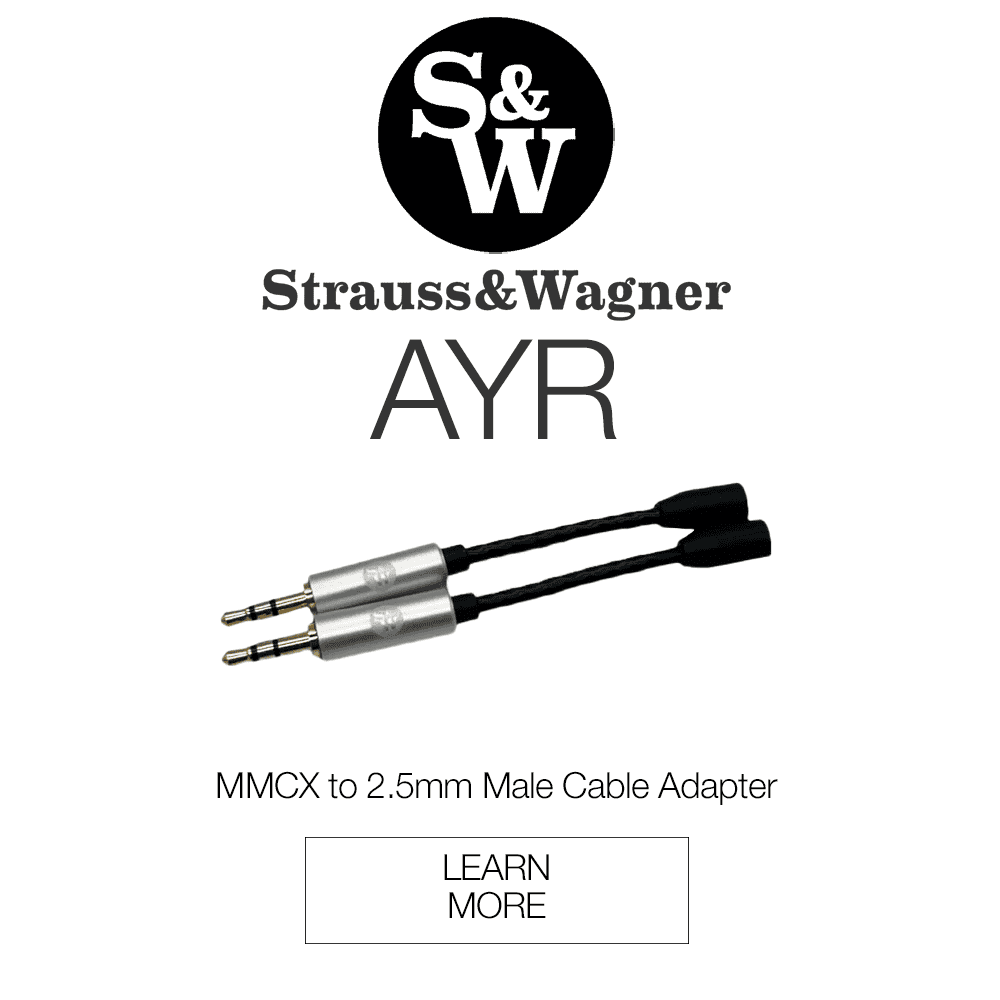There haven’t been too many top of the line portable DAC/Amps that have tried to compete with the Chord Hugo 2. The DAC and headphone amplifier came out in 2017, and has reigned supreme ever since. At $2,500, the Hugo 2 is a versatile piece of equipment that pushed boundaries upon its release. But now iFi, who have also ventured into the portable high-end market with the Diablo 2, has released the iDSD Valkyrie. The Valkyrie comes to market with its own set of future-fi features and transportable functionality. Can the Hugo 2 hold up to the iDSD Valkyrie? Let’s dive into that in this review.
What’s in the Box:
| iFi Audio iDSD Valkyrie | Chord Hugo 2 |
|
|
Build:
iFi iDSD Valkyrie
The iDSD Valkyrie adopts a design reminiscent of iFi’s Zen line but with elevated aesthetics to mark its higher-end status. Its ovular shape is accentuated by a gold finish and a “winged” design inspired by the Valkyrie’s horse. Dubbed the “Winged Wonder,” it features a well-organized layout, with a central display providing essential information such as volume levels, input and upsampling rates, battery status, and filter settings. Complementing the display, LED indicators highlight input selection, sample rate, and active filters. On the front panel, the device offers both a balanced 4.4mm and S-balanced 3.5mm output, the latter designed to minimize noise on TRRS headphones. A volume knob with integrated mute and power functions sits in the center, with buttons for filter selection and input switching on each side.
On the back, the Valkyrie provides a versatile selection of I/O options while maintaining a streamlined design. It features dual USB-C inputs (one for charging and one for digital input) alongside a 3.5mm S/PDIF input and a combination of single-ended and balanced analog connections. Powering the unit are four 5,000 mAh lithium-ion batteries, offering up to 18 hours of playback, though it can also run continuously when connected to iFi’s noise-canceling iPower Power Supply. Designed as both a portable DAC and headphone amplifier, the Valkyrie delivers desktop-quality performance in a compact, versatile package, making it an excellent choice for those who need high-fidelity audio at home and on the go.
Chord Hugo 2:
The Chord Hugo 2 immediately stands out with its machined aluminum chassis, giving it a sleek and premium feel. Unlike the Valkyrie, the Hugo 2 follows the modern and abstract design philosophy that Chord Electronics is known for. The Hugo 2 employs LED color coding to indicate various modes and settings. The buttons are made from durable polycarbonate, while a glass viewing portal allows you to see the custom FPGA running the DAC. It’s meant to be portable, and while not pocket-sized, it is quite a bit smaller and lighter than the Valkyrie. Its battery lasts around seven hours and reaches a full charge in approximately four hours.
The Hugo 2 has six inputs across four physical connections, including micro-USB, dual coaxial inputs, optical, and AptX Bluetooth. As for outputs, it has 1/4-inch and 1/8-inch headphone jacks, as well as RCA stereo outputs, meaning this is a single-ended device. Both headphone jacks can be used simultaneously, though matching impedance is recommended for even audio.
The Valkyrie is a bit more modern with its longer battery life, more straightforward layout, and greater I/O capacity. But the Hugo 2 is no slouch, delivering a one-of-a-kind aesthetic and small form factor that makes this an excellent on-the-go option.
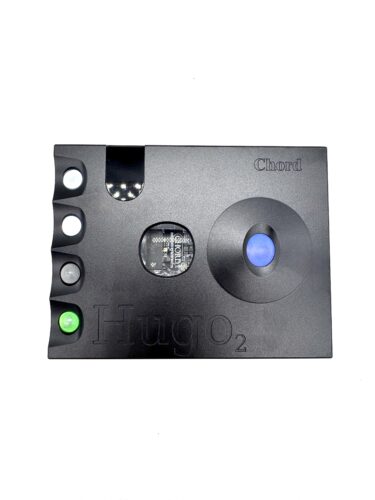
Design:
iFi Audio iDSD Valkyrie:
The iDSD Valkyrie is packed with advanced features, starting with four interleaved Burr-Brown DACs and a high-performance FPGA that incorporates professional DSD remastering algorithms. It offers eight digital filters, and additional sound enhancements include xSpace for added soundstage, xPresence for midrange emphasis, and xBass for deeper low-end response. The Valkyrie also supports high-quality wireless audio with aptX Lossless and LDAC, ensuring top-tier Bluetooth performance at up to 96kHz/24-bit.
As both a USB and Bluetooth DAC, the Valkyrie supports optical and coaxial inputs while delivering high-resolution audio with 32-bit/768kHz PCM and DSD512 playback. Its remastering engine can even upsample to DSD1024. The built-in amplifier delivers up to 5,700 mW of clean power, effortlessly driving a wide range of headphones. With IEMatch technology, it ensures a noise-free experience for sensitive in-ear monitors, and its xMEMS compatibility makes it future-proof for next-generation drivers. Designed for maximum flexibility, the Valkyrie is a powerhouse DAC and amp that fits seamlessly into any setup.
Chord Hugo 2:
Now, we mentioned the Valkyrie has an FPGA for DSD remastering. The Chord Hugo 2, however, runs entirely on an FPGA. It’s a custom design that only Chord can supply, so if you want to hear this advanced tech, this may be your best option. It offers four digital filter modes of its own, and while that may seem less extensive than the Valkyrie’s eight, these filters are custom designed by Chord and have stood the test of time. Additionally, the Hugo 2 features a Crossfeed function, designed to create a more speaker-like presentation for closed-back headphones. This effect enhances stereo imaging with three selectable levels: minimum, medium, and max. This allows users to fine-tune spatial perception to their preference.
Supporting both DSD512 and PCM up to 768kHz/32-Bit, the Hugo 2 also includes AptX for high-quality Bluetooth streaming, enabling wireless playback from compatible devices. While the Bluetooth feature works seamlessly, its range is limited to about 10 feet, likely due to hardware constraints. Sure, the Bluetooth capabilities are behind the Valkyrie’s, but its support for high resolution formats is still excellent and keeps this an up-to-date DAC for most decoding needs.
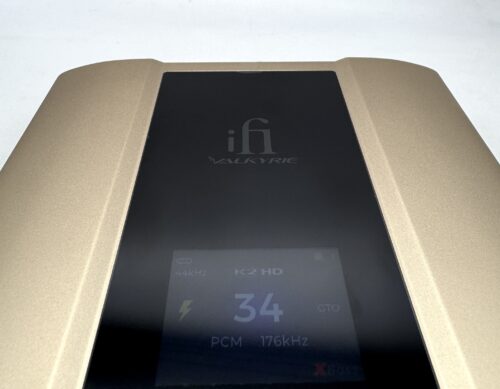
Sound Impressions:
Low End:
The iDSD Valkyrie delivers a deep, impactful low end with its xBass feature, which enhances bass presence without overwhelming the overall sound signature. It provides a slightly warmer and more powerful bass response, making it a great choice for those who enjoy a fuller low end. In contrast, the Chord Hugo 2 offers a more neutral bass presentation, with well-controlled and articulate low frequencies. While it lacks an explicit bass boost function, its natural bass response remains tight and well-defined, catering to those who prefer accuracy over added warmth.
Midrange:
The Valkyrie’s midrange is neutral with a slight emphasis on vocals and instruments, making them ever so slightly more forward and engaging. This results in a slightly more colored but lively midrange presentation. The Hugo 2, on the other hand, maintains a more neutral and transparent midrange, staying true to the original recording. Its clean and highly detailed midrange ensures excellent instrument separation and vocal clarity, making it ideal for those who prioritize an uncolored sound.
Top End:
Treble on the iDSD Valkyrie is detailed yet smooth, with digital filters allowing for slight tuning preferences. The overall presentation leans towards a refined, slightly relaxed treble to avoid harshness. Meanwhile, the Hugo 2 offers a more extended and airy treble, with exceptional clarity and resolution. Its high-frequency roll-off filters allow for slight adjustments. However, the Valkyrie is a little more laid back compared to the forward yet transparent upper reaches of the Hugo 2.
Soundstage:
Both devices excel in soundstage, but their approaches differ. The iDSD Valkyrie’s xSpace feature enhances the sense of openness, providing a more immersive experience, especially with closed-back headphones. The Hugo 2, with its Crossfeed function, creates a speaker-like presentation, improving stereo imaging in a more subtle yet effective manner. While the Valkyrie delivers a more expansive and dramatic soundstage, the Hugo 2 goes for a more natural and precision-oriented spatial representation.

Final Verdict:
Overall, the iDSD Valkyrie is a formidable contender in this price bracket. However, it doesn’t render the Hugo 2 obsolete by any stretch. The Hugo 2 is a little dated in its tech, specifically in its micro-USB inputs and unbalanced I/O. However, internally, the specs are comparable and both offer unique and impressive sound signatures. The Hugo 2 is more straightforward and transparent. I suggest it for someone who wants clean audio right out of the box, with a high priority on transparency. The Valkyrie may be better suited for someone who wants to really tinker with the sound and get it to a place that’s more personalized and engaging. They’re both excellent devices for high end users, so try out both and see which works best for you.
The iFi iDSD Valkyrie and Chord Hugo 2 are available at audio46.
Compare the ranking of various headphones, earbuds and in-ear monitors using our tools.
Discuss this, and much more, over on our forum.
---MAJORHIFI may receive commissions from retail offers.


